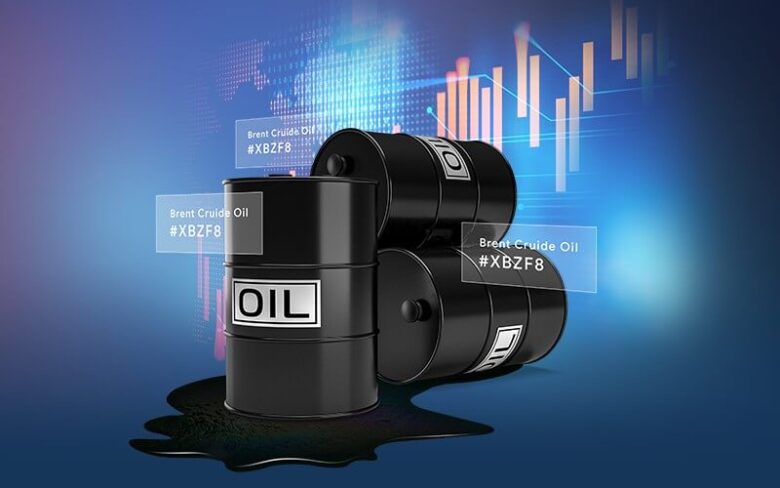The oil market is a complex and ever-changing landscape. As an investor, it can be difficult to navigate the market, particularly when it comes to managing risk. In this guide, we’ll explore some of the strategies you can use to manage risk when trading it.
Contents
Understanding the Oil Market
Before we dive into specific strategies for managing risk in the oil market, it’s important to have a basic understanding. This market is driven by supply and demand, with prices fluctuating based on a variety of factors such as geopolitical events, production levels, and global economic conditions. For traders looking to stay up-to-date with the latest market news and analysis, platforms like oilprofit.app can provide valuable insights and data. By leveraging technology and expert analysis, platforms like this one can help traders make more informed decisions and manage risk more effectively in the fast-paced and ever-changing oil market.

Source: danielstrading.com
Managing Risk in Oil Trading
Diversify Your Portfolio
Diversifying your portfolio is a crucial strategy for managing risk when trading in oil retail. A diversified portfolio is one that includes a variety of different assets, such as stocks, bonds, and commodities, rather than being heavily weighted toward one particular investment.
Why Diversify Your Portfolio?
The main benefit of portfolio diversification is that it can help reduce the impact of retail volatility on your overall investment. If you have all your money invested in a single asset, such as oil, then a sudden price drop could result in significant losses. However, by spreading your investments across multiple asset classes, you can help reduce the impact of any individual investment on your overall portfolio.
How to Diversify Your Portfolio
When it comes to diversifying your portfolio in the oil market, there are several strategies you can use:
- Invest in different types of oil-related assets: Rather than investing solely in oil futures or oil company stocks, consider diversifying your portfolio to include related assets such as energy ETFs or infrastructure projects.
- Look beyond the oil demand: Consider investing in other asset classes, such as real estate, bonds, or currencies, to help reduce the impact of oil demand volatility on your overall investment portfolio.
- Use professional investment services: Many professional investment firms offer diversified portfolios that include a range of different asset classes. Consider working with an investment advisor to develop a customized investment plan that takes into account your risk tolerance and financial goals.

Source: cnbc.com
Set Stop-Loss Orders
Setting stop-loss orders is an essential strategy for managing risk when trading in the oil demand. Stop-loss orders are automatic sell orders that are triggered when the price of oil falls below a certain level. These orders help limit losses by allowing traders to exit their positions before prices fall too far.
Why Set Stop-Loss Orders?
Stop-loss orders are an effective risk management tool for several reasons:
- They help limit losses: By setting a stop-loss order, traders can limit their losses by ensuring that they exit a position when the price of oil falls below a certain level.
- They reduce emotional decision-making: Emotions can often cloud traders’ judgment, causing them to hold onto positions for too long or sell out of panic. Stop-loss orders take the emotion out of decision-making by automating the sell order.
- They allow for better risk management: By setting stop-loss orders, traders can plan their trades more effectively and manage their risk more efficiently.
How to Set Stop-Loss Orders
Setting stop-loss orders is a straightforward process that can be done through most trading platforms. Traders simply need to select the position they want to sell, set the stop-loss price, and submit the order. It’s important to choose a stop-loss price that is appropriate for the specific trade and takes into account the trader’s risk tolerance.

Source: superforex.com
Stay Informed
Staying informed about the latest news and developments in the oil market is an essential strategy for managing risk when trading in this complex market. By keeping an eye on production levels, geopolitical events, and other factors that can affect the price of oil, traders can make more informed decisions and reduce the impact of market volatility on their investments.
Why Stay Informed?
Staying informed is essential for several reasons:
- Understanding demand dynamics: By staying informed, traders can better understand the factors that drive oil retail and make more informed trading decisions.
- Mitigating risk: By staying informed about the latest news and developments, traders can be better prepared to manage risk and protect their investments.
- Identifying opportunities: By staying on top of trends, traders can identify opportunities for profit and take advantage of them before the demand changes.
How to Stay Informed
Staying informed about the oil market is easier than ever thanks to the abundance of news sources, data, and analysis available online. Traders can follow news websites, social media accounts, and industry experts to stay up-to-date on the latest developments. It’s also important to conduct your own research and analysis to supplement the information available through traditional sources.

Source: tickertape.tdameritrade.com
Use Technical Analysis
Technical analysis is a valuable tool for managing risk when trading in the oil market. This strategy involves analyzing charts and other data to identify trends and patterns that can help traders make more informed decisions and reduce the impact of market volatility on their investments.
Why Use Technical Analysis?
Using technical analysis can be beneficial for several reasons:
- Identify market trends: Technical analysis can help traders identify market trends and patterns, which can help them make better trading decisions.
- Predict price movements: Technical analysis can also help traders predict future price movements, giving them an edge in the market.
- Mitigate risk: By identifying market trends and predicting price movements, traders can better manage risk and protect their investments.
How to Use Technical Analysis
Using technical analysis involves analyzing charts and other data to identify trends and patterns. Traders can use a variety of technical indicators, such as moving averages, support and resistance levels, and momentum indicators, to help identify market trends and make informed trading decisions.

Source: admiralmarkets.com
Consider Options
Options trading can be a useful strategy for managing risk when trading in the oil market. Options contracts give traders the right, but not the obligation, to buy or sell oil at a certain price on or before a specific date. This can help protect investments against sudden price drops and reduce the impact of market volatility on trading positions.
Why Consider Options?
There are several benefits to using options as a risk management strategy:
- Limited risk: Options contracts limit the amount of risk a trader is exposed to since they only pay the premium for the contract.
- Flexibility: Options trading offers traders flexibility in terms of the size and timing of their trades.
- Protection against downside risk: Options contracts can help protect against sudden price drops by allowing traders to sell their positions at a predetermined price.
Conclusion
Managing risk in the oil market is essential for any investor looking to trade in this complex and ever-changing market. By diversifying your portfolio, setting stop-loss orders, staying informed, using technical analysis, and considering options, you can help mitigate risk and increase your chances of success in the oil market.
